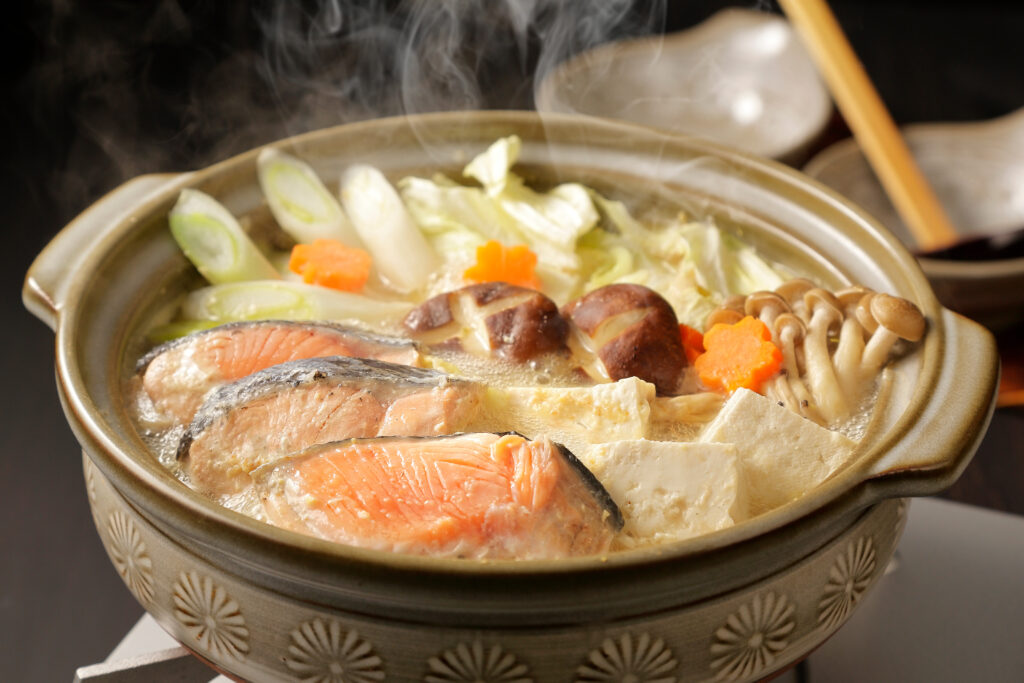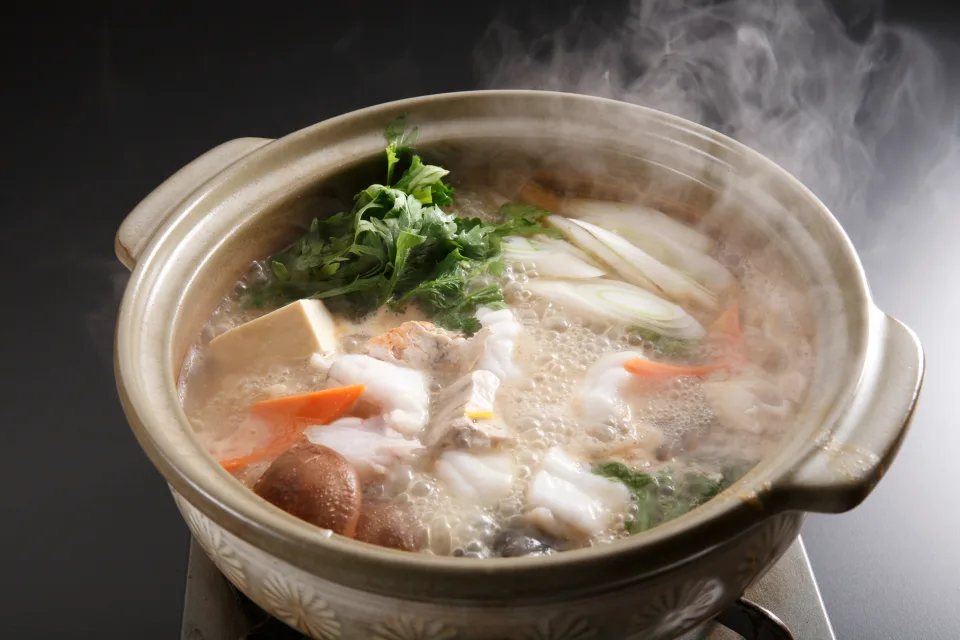In the heart of Hokkaido’s biting winters, there’s a dish known for its ability to warm the soul and delight the senses. Ishikari Nabe, a sumptuous hot pot named after the Ishikari River, which meanders through this northern prefecture, is a quintessential example of regional cuisine that marries the local love for fresh seafood with the necessity of staying warm during the cold months. This traditional dish, rich with the flavors of salmon and a variety of vegetables simmered in a miso-based broth, has been a staple in Hokkaido households and a must-try for visitors.
Historical Background
Ishikari Nabe takes its name from the Ishikari River, the third-longest in Japan, famous for its abundant salmon runs. Historically, the indigenous Ainu people of the region utilized salmon in many of their dishes. Over time, these culinary practices were woven into the broader tapestry of Hokkaido’s cuisine. Ishikari Nabe, with salmon as its star ingredient, reflects this historical significance and showcases the local penchant for utilizing fresh, regional produce.

Ingredients and Preparation
The soul of Ishikari Nabe lies in its simplicity and the depth of its flavors. The dish typically includes:
- Salmon – Fresh or salted salmon cut into chunks, forming the hearty base of the nabe.
- Vegetables – A hearty mix of cabbage, leeks, and daikon radish, with additions like shiitake mushrooms and tofu often included.
- Broth – A rich broth made with miso paste, which is a staple in Japanese cooking, providing a savory depth that complements the freshness of the ingredients.
- Seasonings – Typical seasonings include sake and soy sauce, which enhance the umami of the broth.
To prepare Ishikari Nabe, the ingredients are layered in a donabe (clay pot) or any deep pot, starting with the vegetables, then the salmon, and finally, the tofu and mushrooms. The miso-based broth is then poured over the ingredients and the whole pot is simmered until everything is beautifully cooked through and the flavors meld together.
Culinary Significance
Ishikari Nabe is more than just a meal; it’s a communal dish meant to be enjoyed with others, reflecting the communal nature of Japanese eating culture. During Hokkaido’s harsh winters, gathering around a steaming pot of Ishikari Nabe not only provides physical warmth but also fosters a sense of closeness among those sharing the meal.
Modern-Day Enjoyment
Today, Ishikari Nabe remains a popular winter dish in Hokkaido and can be found in many local restaurants specializing in nabe dishes. It is also enjoyed at home, particularly during the colder months, for its comforting warmth and nourishing properties. For culinary adventurers and home cooks outside of Japan, making Ishikari Nabe offers a delightful glimpse into Hokkaido’s culinary culture, inviting a piece of Japanese winter into their own kitchens.
Whether enjoyed in a snowy Hokkaido village or as a rustic dinner in a far-off land, Ishikari Nabe carries the essence of its region — rich, warming, and deeply satisfying. This dish is a testament to the simple beauty of Japanese regional cooking, where local ingredients and traditional methods come together to create something truly comforting.
Ingredients for Ishikari Nabe:
- 400 grams of salmon fillets, skin removed and cut into bite-sized pieces
- 1 block of firm tofu, drained and cubed
- 1/2 head of napa cabbage, chopped
- 1 medium daikon radish, peeled and sliced into thin rounds
- 2 medium carrots, peeled and sliced into thin rounds
- 1 leek, white and light green parts only, washed and cut into 2-inch pieces
- 200 grams of shimeji mushrooms, base removed
- 1 sheet of kombu (dried kelp), about 10cm
- 6 cups of water
- 3 tablespoons of miso paste, preferably red miso
- 2 tablespoons of sake
- 1 tablespoon of soy sauce
- 1 teaspoon of sugar
- Green onions, chopped, for garnish
Instructions:
- Prepare the Dashi:
- In a large pot, soak the kombu in 6 cups of water for at least 30 minutes. Slowly bring the water to just below boiling point (do not let it boil). Remove the kombu just before the water starts to boil.
- Add the Miso:
- In a small bowl, mix the miso paste with a little hot dashi to dissolve it. Stir this mixture back into the pot with the rest of the dashi. Add the sake, soy sauce, and sugar, and stir until everything is well combined.
- Add the Vegetables and Tofu:
- Add the daikon, carrots, and leek to the pot. Simmer over medium heat for about 10 minutes.
- Add the chopped napa cabbage and simmer for another 5 minutes.
- Cook the Salmon:
- Place the salmon pieces and shimeji mushrooms into the pot. Let the soup simmer gently for about 5 to 7 minutes, or until the salmon is cooked through.
- Add the Tofu:
- Gently add the cubed tofu to the pot and cook for an additional 3-5 minutes, just until the tofu is heated through.
- Final Adjustments:
- Taste the broth and adjust the seasoning if necessary. The flavor should be a harmonious blend of savory, with a slight sweetness and depth from the miso.
- Serve:
- Ladle the hot nabe into bowls, making sure to distribute the salmon, vegetables, mushrooms, and tofu evenly. Garnish with chopped green onions.
- Serve immediately, enjoying the warmth and rich flavors of the broth.
This Ishikari Nabe recipe embraces the essence of Hokkaido’s winter cuisine, providing a hearty and warming dish perfect for sharing with family and friends during the colder months.
